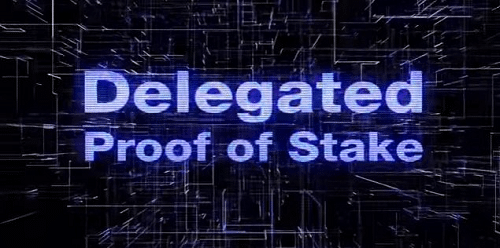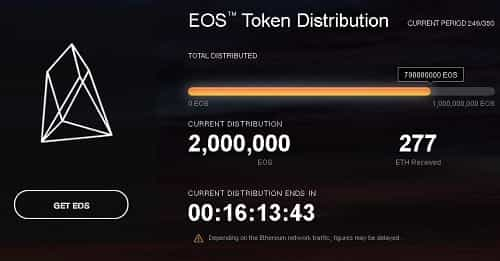EOS: What you Need to Know About the Next Generation Blockchain
EOS has become one of the most important upcoming blockchain projects of the last few years. Created by Dan Larimer, creator of both BitShares and Steemit, It is is intended to not only be a competitor to other smart contract platforms like Ethereum but also to represent a true third-generation cryptocurrency platform.
EOS runs on a completely different set of principles than other blockchain projects as it makes use of a system known as delegated proof-of-stake.
In this article, we're going to go over some of the important and critical differences that EOS plans to offer, as well as some concerns that the blockchain community has had about the project.
What is EOS? The basics
At its core, EOS is intended to be a highly scalable platform on which distributed applications can be run easily. While competitors like Ethereum can be thought of as a global computer, EOS is more like a global operating system. The intent of its designers is to allow for the quick and easy deployment of distributed applications (or Dapps).
While Ethereum-based applications need to be created from scratch each time, EOS claims that it will allow for a large variety of standard application types to be deployed with minimal effort. This would allow for the creator of an EOS Dapp to only need to customize their program, and not reinvent the wheel.
From a technical perspective, EOS is highly different from Ethereum because of its consensus model. Today, Ethereum runs on a proof-of-work (POW) model. Eventually, it will transition into a proof-of-stake model called Casper POS
The creator of EOS, Dan Larimer, wanted to prevent the formation of mining pools which, in theory, can threaten the security of a blockchain by centralizing resources. In order to prevent this, Larimer is instituting a consensus model that he created himself called delegated proof-of-stake.
The EOS consensus model

Delegated proof-of-stake means that only 20 entities will be allowed at one time to create new blocks. These 20 entities (whether they be individuals, or institutional size miners) are called witnesses. In order to become a witness, individuals who hold EOS tokens will need to cast their vote for whom they wish to become a witness.
In the end, the top 20 will be automatically selected during each 21-block round. The percentage of votes earned determines the number of blocks the witness is authorized to create or mine. As the entity that mines the block gets the entire block reward, becoming a witness will be a very valuable and sought after position.
The reason for creating delegated proof-of-stake is to prevent mining pools from forming and to increase the security of the network. By requiring votes and limiting the pool of miners to 20, the number of entities that are able to affect the blockchain in a potentially harmful way is greatly reduced.
Likewise, if someone is elected as a witness, they are incentivized to behave in the best interests of the blockchain, lest they lose their position as a witness and forfeit all potential profits from being one.
Millions of transactions per second
In an interview done on YouTube with YouTuber Ivan on Tech, Larimer noted that in order for a blockchain project to be adopted, it must have a frictionless joining experience. In simple terms, if you are required to first by tokens from the third-party exchange, the average person will simply not be interested in joining due to the difficulty involved.
As such, EOS was designed to not require any cryptocurrency units of any kind in order to participate in or interact with the EOS blockchain.
Further, the blockchain is designed to support millions of transactions per second. EOS is still under development and won't be released until later this year. The development team has a lot of time to get ahead of potential scaling issues before they begin to cause problems.
Ethereum is developing its own solutions to address scaling issues. EOS will have the advantage of having robust solutions already in place on launch day.
The ERC-20 token controversy

Eos began its ICO in the middle of last year. While many ICOs of that time ran for just a few days, or in some cases less than a minute, the EOS sale was slated to last for an entire year. However, as the blockchain does not exist yet, the sale was not able to directly release native EOS tokens.
Instead, a stopgap measure was introduced. Ethereum ERC-20 tokens were released with the expectation that they could be later exchanged for native EOS tokens. That is, once the platform goes live in mid-2018.
Careful observation of the EOS ICO documentation revealed a highly suspicious entry. Specifically, official documentation noted that holders of EOS ERC-20 tokens were not necessarily entitled to anything whatsoever. This led to a relative firestorm of concerned investors. They feared that their ERC-20 tokens would not be honored and not be exchanged for the final EOS tokens.
The ERC-20 tokens have also faced some significant price volatility. Back in July 2017, the tokens were trading for about two dollars each. At one point, they lost more than half their value and depth well below one dollar each.
Today, as the release of the platform nears, the ERC-20 tokens are trading for over eight dollars each. This means that anyone who bought the tokens during the significant dip in price would have increased their investment tenfold in just a few months.
Buying & Storing EOS
If you have decided that you would like to buy some EOS then you will need to head on to one of the exchanges that list the token. EOS is quite a popular coin and hence has quite a bit of coverage on these exchanges. Some of the biggest exchanges that you can take a look at are the Binance Exchange and HTX.
However, these exchanges require you to first get another cryptocurrency such as Bitcoin etc in order to buy the coins. You may want to then consider Kraken which will allow you to fund your account with a Fiat currency and buy the tokens. The term for these types of exchanges are "Fiat Gateways".
Once you have your EOS you will want to store them securely in a wallet. This is because keeping a large holding of coins on an exchange is not prudent given the risks that come with it. We have covered an extensive list of the best EOS wallets to store your tokens.
Final thoughts
What EOS is offering is certainly compelling. While it may not necessarily replace Ethereum, it could prove to be a serious heavyweight contender. Perhaps much in the same way that Apple and Microsoft fight for the personal computer market today.
EOS is also not alone. In the last few months, a number of other smart contract and a decentralized app focused blockchain projects have launched. Some have offered ICO's, or are preparing to launch very soon. For example, Cardano and QTUM could pose threats to not only EOS but Ethereum itself.
Finally, we do not know if the cryptocurrency community at large will adopt EOS for the deployment of decentralized apps. If EOS is really able to offer free transactions, then that could give it a highly significant advantage over Ethereum.
Some recent blockchain projects such as the Kik ICO have stepped away from Ethereum. They did so due to concerns over transaction fees and speed.
If EOS is able to sidestep all of these issues from its starting position, it could give it the advantage it needs to find its place in the blockchain space.
Disclaimer: These are writer opinions and should not be considered investment advice
Disclaimer: These are the writer’s opinions and should not be considered investment advice. Readers should do their own research.
